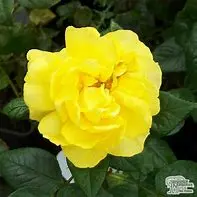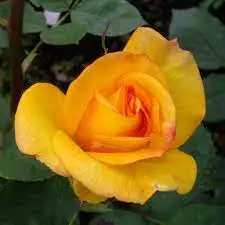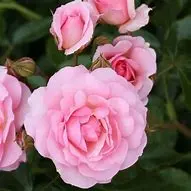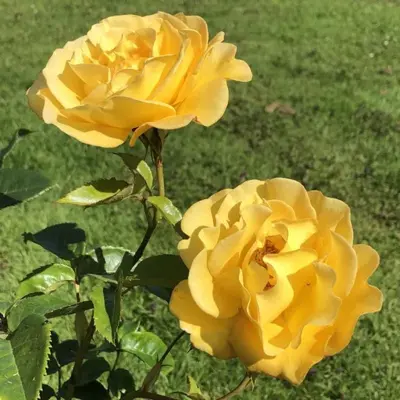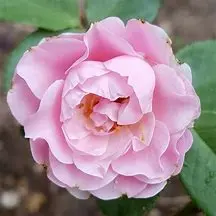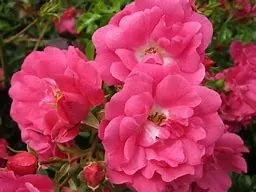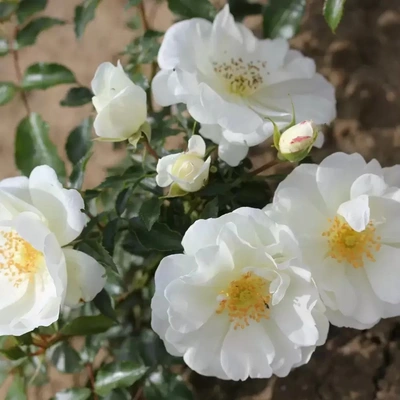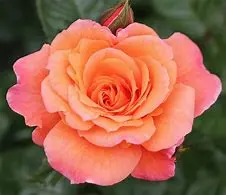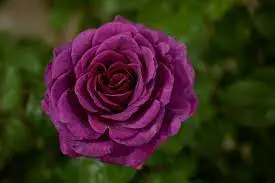Roses
Roses are a classic for in every garden or on you patio or balcony! Plant them in winter and enjoy them when their flowers bloom and smell delicious in summer! At Jones Garden Centre we have a wide variety of Roses and eveyrhting you need to keep them in great condition. Have a look in our webshop or come to our garden centre, where our experts are happy to help you pick the right roses or answer any of your questions!
How to take care of Roses
Rose care is easier than you think, anyone can grow these beautiful flowers successfully! Plant your roses in a bright and sunny location with good drainage. Fertilize them regularly for impressive flowers. Water them evenly to keep the soil moist. Prune well established rose bushes in early spring. Watc carefully h for diseases like powdery mildew or black spot. Roses are no more difficult to care for than other flowering shrubs. Follow these ten essential rules to learn how to grow roses:
1. Start with the roots of the Rose
You can buy Roses as dormant bare-root plants or already potted in soil. Each type has its benefits:
- Bare-root roses: One of the advantages of bare-root roses is the greater selection of varieties available. Plus, they are economical and can be ordered online. However, unlike container roses, bare-root plants need to have their roots soaked overnight in water before planting them. Also, the roots should be kept moist for the first few months after planting.
- Container roses: Container roses are a great for novice gardeners because they’re easy to plant and establish quickly. They can also be purchased at local nurseries throughout the growing season. This allows you to plant them when climate conditions are ideal— preferably a cool and cloudy day.
2. Choose your roses carefully and wisely
There are numerous classes of roses, ranging from micro-miniatures to grandifloras, and from groundcovers to climbing roses, with some classes containing hundreds of varieties. While it may be tempting to fill your rose garden with a wide assortment, you are likely to end up with a disorderly array and too many plants for the space. A few well-chosen varieties will give you more satisfaction and will be much easier to take care of.
If you want lower-maintenance roses, try shrub or landscape roses, like the Rosa you're Beautiful, for a more care-free rose garden.
3. Find the right site
For the best show of flowers and the healthiest plants, rose bushes should receive six to eight hours of sunlight daily. They should also be planted in well-drained soil that is rich in organic matter. In especially hot climates, roses do best when they are protected from the hot afternoon sun. In cold climates, planting a rose bush next to a south- or west-facing fence or wall can help minimize winter freeze damage.
4. When to best plant your Roses
Roses are best planted in the spring (after the last frost) or in fall (at least six weeks before your average first frost). Planting early enough in fall gives the roots enough time to get established before the plants go dormant over the winter. Bare-root roses are typically available only in early spring and should be planted soon after you bring them home. Roses purchased in containers give you more flexibility in planting time.
5. Plant your Roses properly
Planting your bare-root or container roses properly will ensure they get off to a good start!
- The planting hole needs to be deep enough and wide enough to accommodate the plant’s roots. The area needs to have good drainage, since roses don’t like wet feet.
- Mix a generous amount of garden compost, peat moss, or other organic matter with the soil that was removed from the planting hole. Use some of this mixture at the bottom of the planting hole and place the rose bush in the hole.
- The plant’s crown should be at ground level in mild climates, and 2 to 3 inches below ground level for cold climates.
- Fill the hole partially with the soil mixture and add a slow-release fertilizer.
- Water thoroughly, and then finish filling the hole with the remaining soil.
- Water again, then mound loose soil around the canes to protect the rose while it acclimates to its new site.
- If you’re planting several rose bushes together, space them at least 3 feet apart to allow ample growing room as they mature.
6. Fertilize your Roses regularly
For an impressive show of flowers, a rose bush needs to be fertilized regularly. Organic methods provide a slow, steady supply of nutrients. Monthly applications of compost, organic manure, and other organic and natural fertilizers, work well. For newly planted bare-root plants: Apply organic amendments to the soil at planting time. Wait until after the plant produces its first blooms to apply full-strength fertilizers so you don’t burn the new roots.
7. Water your Roses wisely
The soil should be kept evenly moist throughout the growing season. The amount and frequency of watering will depend on your soil type and climate. Roses do best with the equivalent of 1” of rainfall per week during the growing season. Roses growing in sandy soils will need more watering than those in heavier clay soils. Hot, dry, and windy conditions will also parch roses quickly. How you water is as important as how often you water them. To keep roses healthy, avoid getting the foliage wet. Use a soaker hose, watering can with a long spout, or a watering wand pointed directly at the soil.
8. Prune your Roses like a pro
It’s almost impossible to kill a rose bush by overpruning. But, if you follow a few simple rules, the results will look more professional and result in a healthier plant. Many newer rose varieties don’t require much —if any—pruning. A good pair of bypass pruners can make the job even easier. Major pruning should be done in early spring. For all roses, start by removing any dead or damaged canes (any that look brown). For specimens that require a hard pruning, cut back a third to a half of the previous year’s growth until you find healthy, white centers inside the cane. You can lightly prune your roses all season long to keep them well-groomed. Some varieties of reblooming roses will require deadheading to encourage reblooming throughout the season. Cut spent blooms back to the first five-leaflet stem to promote regrowth. If your rose bushes are “self-cleaning” (which means they don’t develop rose hips), no deadheading is needed. Blooms will drop off automatically and the plants will keep on producing more flowers.
9. Keep your Roses healthy
The best way to prevent rose diseases is to choose disease-resistant varieties. These roses are bred and selected to resist the most common rose afflictions, including powdery mildew and black spot. Powdery mildew typically appears during the summer, especially when the days are hot and dry and the nights are cool and wet. The tell-tale signs include leaves that curl and twist and the development of a white, powdery down on the leaves. To avoid powdery mildew, water plants at ground level in the morning, since wet leaves (especially overnight) provide the perfect growing environment. Pruning a rose bush to allow air to circulate through the foliage also helps prevent this powdery growth.
Black spot is a waterborne fungal disease. It appears as circular black or brown spots on the top side of leaves. It starts toward the bottom of a bush and works its way up, eventually causing defoliation. Prevent this disease the same way you prevent powdery mildew: by improving air circulation around and through the plant, and watering at ground level. Use a pesticide-free alternative to help prevent disease.
10. Show off your Roses
Roses have long been prized for their beautiful and fragrant cut flowers. But, no roses are lovelier than those gathered fresh from your own garden. Here are a few tips for preserving your cut roses:
- Roses will last the longest when they are cut immediately after the bud stage, when the petals are starting to open.
- Use hand pruners or garden scissors with sharp blades to cut the stems without damaging their water uptake channels.
- Cut roses when they are dewy fresh and hydrated (in morning or evening), not when the plant may be stressed from heat.
- Recut the rose stems right before putting them in a vase. This helps eliminate air bubbles that prevent them from taking up water. Also, cut the stems at a 45-degree angle so they don’t rest flat on the bottom of the vase.
- Strip off any lower leaves that fall below the water line to avoid rot and bacterial growth. Above the water line, leave as much foliage as possible, which will help to draw up water.
- Change the water frequently to remove any bacteria. Also recut the flower stems every few days to improve water absorption.





